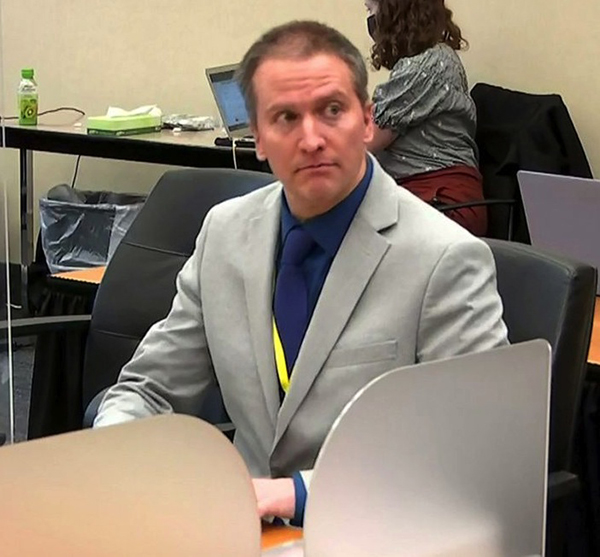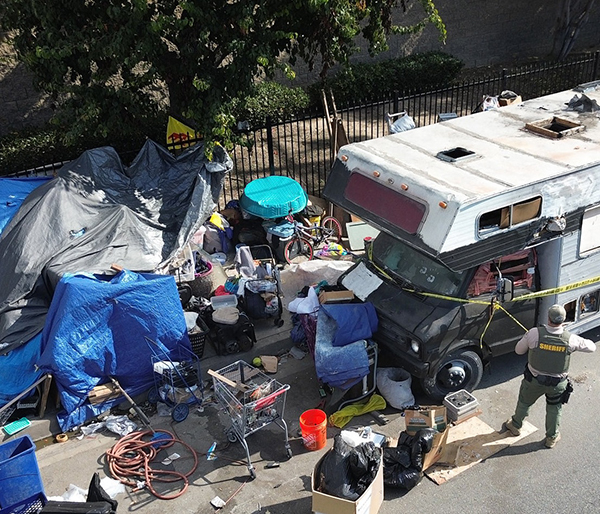THE HUTCHINSON REPORT
By Earl Ofari Hutchinson
Contributing Columnist
There was a loud warning 30 years before Derek Chauvin choked George Floyd to death about how cops like Chauvin are turned into Frankenstein monsters.
In 1991, the Christopher Commission was charged with investigating the causes of the riots that rocked the nation after the acquittal of the four Los Angeles police officers that beat black motorist Rodney King. In a blistering report, it identified hundreds of officers who had been the targets of citizen complaints of excessive force, in nearly all cases against blacks and Latinos.
Some of the officers had six complaints or more against them for using improper tactics in dealing with suspects. It tactfully labeled them “potential problem officers.”
The officers were accused of beating suspects, kicking them and, in some cases, shooting them. Not one of the officers was fired. Not one of the officers received anything more than a hand slap as disciplinary punishment. And, most importantly, not one of them was prosecuted for their multiple acts of terror under the color of law.
A follow-up report two years later found that nearly all of these “problem officers” were still on the job. There was no indication that any of them had even undergone the intensive counseling or training that the commission had initially recommended. It took years and tremendous pressure from the Police Commission and the U.S. Justice Department to persuade the Los Angeles Police Department to drop its resistance to a computerized monitoring system that would better track civilian complaints regarding the use of excessive force.
There was yet another damning finger pointed at how police officials and higher ups wink and nod, turn a blind eye, and even overtly encourage aggressive action that easily strays into naked brutality by cops against civilians.
In a 1993 interview shortly after his conviction in federal court for beating King, then-LAPD Sgt. Stacey Koon told an interviewer that he had acted as he had because there were no clear policy rules — no training or procedures — on what constitutes excessive force when subduing suspects.
Some dismissed Koon’s complaint as a self-serving ploy by a disgraced rogue cop. But the blunt reality is he spoke the truth.
Now, nearly 30 years later, we come to Chauvin and a near rerun of how bad cops stay in uniform with the tacit complicity of higher ups. Here’s a cop who had nearly 20 complaints of abuse, beatings, shootings and reckless car chases.
The complaints spanned a decade on the Minneapolis police force. Successive Minneapolis mayors, police chiefs, members of the police commission, and Hennepin County prosecutors, including for a time U.S. Sen. Amy Klobuchar, read the file on Chauvin, scrutinized the reports, examined the complaints, and investigated his trail of violence. Yet, they did nothing. Their inaction was a tacit, if not open, stamp of approval of his violent acts.
There’s more still. The officers who worked with Chauvin almost certainly were not blind to his actions. The ultimate proof is this. In that fateful moment as Floyd lay helplessly on the ground fighting for his life with Chauvin’s knee slowing choking the life out of him, other officers either stood around doing nothing to assist Floyd, or worse, piled on Floyd to subdue a man that was already laying helplessly on the ground near death. They share Chauvin’s guilt as well.
The Floyd killing strikes to the heart of an issue that haunts Minneapolis and all police departments. That is: How much force is too much force? What should police do when confronted with an unarmed suspect? When, if ever, is it justified to strike suspects, or to shoot them, or in Floyd’s case to choke them to death — and who is to blame when innocent people die?
The vague rule is that an officer can use deadly force when he feels his life is endangered and there are no less-extreme options to subdue a subject. But what does that really mean? Again, police officials point to countless rules and regulations in their training manuals and policy statements about the use of deadly force. That is strictly stuff on paper.
When a Chauvin obliterates the line on the use of force and then remains on the force to continue to obliterate that line, the inevitable happens — the hideous murder of a Floyd that the world witnesses. Then the wrath of the heavens flood down on Chauvin, and Chauvin alone.
As we saw in Minneapolis, police and city officials quickly scrambled and issued pious, self-serving statements about their shock. They promised swift action. Nothing is said, though, about their role in creating the hideous pieces that made a Chauvin.
The overuse of excessive force is still the biggest issue poisoning relations between the police and minority communities. It has sparked deadly racial turmoil and civil unrest in too many cities to count, Minneapolis and Los Angeles being only the latest.
Chauvin was a vicious, out of control cop. But he had lots of help along the way. And like Frankenstein, he didn’t create himself.
Earl Ofari Hutchinson is taking a couple of weeks off. This column was originally published June 4, 2020.











